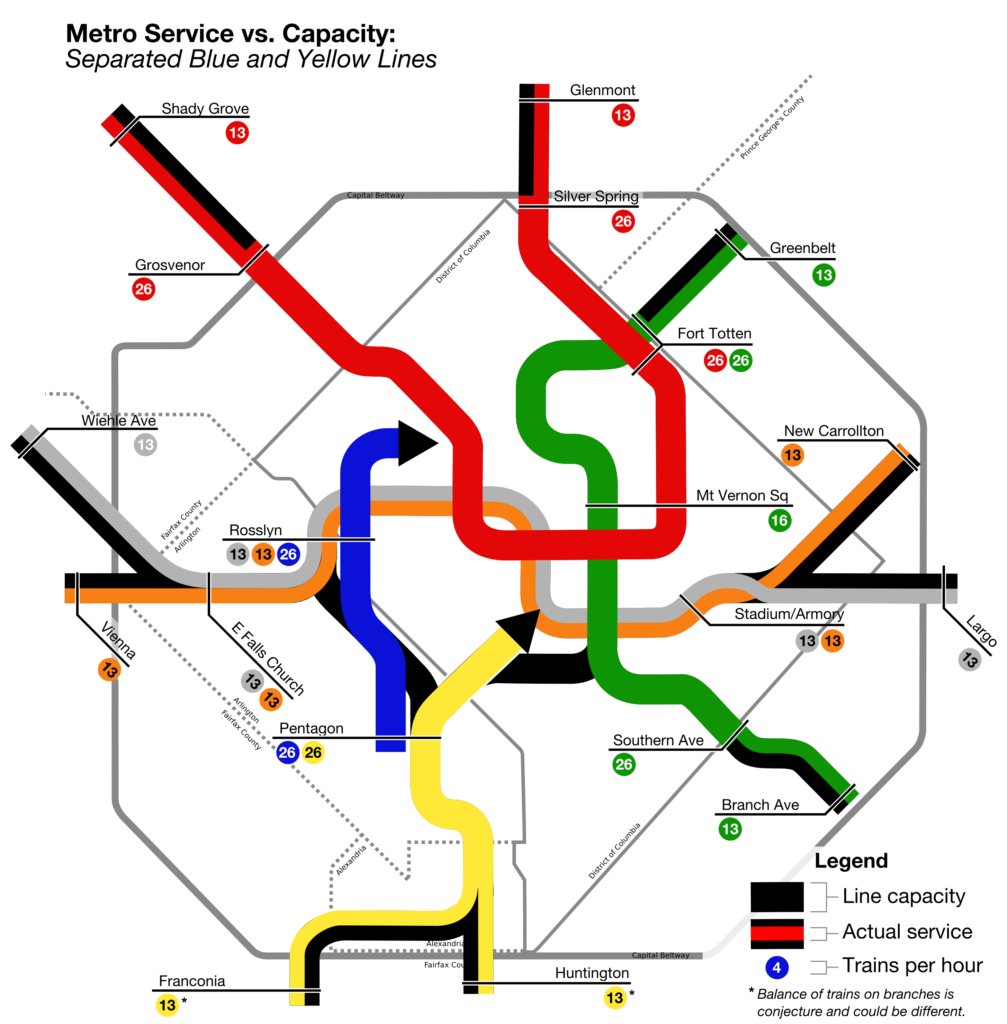The Blue Line Metro DC, fondly nicknamed the “Blue Beast,” snakes its way through the heart of Washington D.C., Maryland, and Virginia, connecting vibrant urban centers, historic landmarks, and charming neighborhoods. Spanning 27 stations across 23.1 miles, it’s the second-longest line on the Metro system, offering a unique perspective on the city’s rich tapestry.
Related Post –
North of the City:
The Blue Beast begins its journey in suburban Virginia, offering convenient park-and-ride options. It soon plunges into the historic gem of Old Town Alexandria, where cobblestone streets and charming shops transport you back in time. Bustling King Street buzzes with activity, while quiet Huntington provides a sense of suburban respite.
Into the Core:
Crossing the Potomac River, the Blue Beast roars into the heart of Washington D.C. Rosslyn’s gleaming skyscrapers offer stunning views, while Foggy Bottom-GWU pulsates with the energy of George Washington University. Farragut West grants access to the White House and trendy Georgetown, while Metro Center becomes the central hub for all Metro lines. At Judiciary Square, history whispers from the Supreme Court and law firms, while Capitol South stands proudly beneath the U.S. Capitol Building.
Southward Bound:
Beyond the Mall, the Blue Beast delves into the vibrant Eastern Market, a feast for the senses with its fresh produce and handcrafted treasures. Nationals Park beckons baseball fans at Potomac Ave, while The Wharf’s trendy bars and restaurants add a modern touch. Benning Road and Capitol Heights reveal the city’s diverse communities, while Cheverly offers a glimpse into its historical past. As the line crosses the Anacostia River, it connects with the rich heritage of the African American community and the wonders of the Smithsonian Air and Space Museum Udvar-Hazy Center.
Reaching the Endpoints:
The Blue Beast continues its journey through quiet residential neighborhoods, offering park access and bus connections. It concludes its run in suburban Virginia, once again inviting riders to connect with the surrounding communities.
Blue Line Metro DC Washington
Whether you’re a history buff exploring iconic landmarks, a sports fan cheering on the Nationals, or a local resident navigating your daily commute, the Blue Line offers a convenient and scenic way to experience the best of Washington D.C., Maryland, and Virginia. So, hop aboard and let the Blue Beast take you on a journey through the city’s vibrant heart!
- Franconia-Springfield
- Van Dorn Street
- King Street
- Huntington
- Alexandria
- Rosslyn
- Foggy Bottom-GWU
- Farragut West
- Metro Center
- Judiciary Square
- Capitol South
- Eastern Market
- Potomac Ave
- Stadium-Armory
- Benning Road
- Capitol Heights
- Addison Road
- Cheverly
- Deanwood
- Minnesota Ave
- Anacostia
- Congress Heights
- Southern Ave
- Alabama Ave
- Naylor Road
- Branch Avenue
- Suitland
- Morningside
- Braddock Road
Washington DC Metro Blue Line Stops
North of the City:
- Franconia-Springfield: Starting point in Virginia, offering park-and-ride options and easy access to Springfield Town Center.
- Van Dorn Street: Quiet residential area with shops and restaurants, close to Fort Belvoir.
- King Street: Bustling commercial district in Old Town Alexandria, with historic buildings, cobblestone streets, and waterfront charm.
- Huntington: Family-friendly neighborhood with parks, shops, and the Mount Vernon Recreation Center.
- Alexandria: Vibrant city center with art galleries, restaurants, and the Torpedo Factory Art Center.
Into the Core:
- Rosslyn: Bustling business district with stunning views of the Potomac River and Arlington National Cemetery.
- Foggy Bottom-GWU: Home to George Washington University, with museums, restaurants, and a lively student atmosphere.
- Farragut West: Offers access to the White House, State Department, and trendy Georgetown.
- Metro Center: Central interchange for all Metro lines, with shops, restaurants, and easy access to major attractions.
- Judiciary Square: Supreme Court and law firms, National Building Museum, and Ford’s Theatre, where President Lincoln was assassinated.
- Capitol South: U.S. Capitol Building, congressional offices, Library of Congress, and Eastern Market, a historic market district.
Southward Bound:
- Eastern Market: Bustling market with fresh produce, crafts, and antiques, close to Nationals Park.
- Potomac Ave: Waterfront access, Nationals Park baseball stadium, Yards Park, and the Wharf, a vibrant entertainment district.
- Stadium-Armory: Nationals Park and RFK Stadium access, with sports bars and restaurants.
- Benning Road: Diverse community with a farmers market, parks, and bus connections.
- Capitol Heights: Up-and-coming area with restaurants, shops, and easy access to Suitland Road Park.
- Addison Road: Quiet residential neighborhood with parks and bus connections.
- Cheverly: Diverse community with historic sites, parks, and the National Arboretum.
- Deanwood: Industrial area with park access and bus connections.
- Minnesota Ave: Quiet neighborhood with shopping options and bus connections.
- Anacostia: Historic African American community with waterfront access, the Anacostia Park, and the Smithsonian Institution’s National Air and Space Museum Udvar-Hazy Center.
- Congress Heights: Up-and-coming area with restaurants, shops, and park access.
- Southern Ave: Residential area with bus connections.
- Alabama Ave: Quiet neighborhood with park access.
- Naylor Road: Suburban area with park-and-ride options.
- Branch Avenue: Commercial area with shopping, restaurants, and easy access to the National Harbor.
- Suitland: Suburban area with park-and-ride options and the Suitland Recreation Center.
- Morningside: Quiet neighborhood with park access.
- Braddock Road: Suburban ending point in Virginia, offering park-and-ride options and close proximity to Fort Belvoir.
Washington DC Metro Blue Line Schedule
Train frequencies and timings can vary significantly depending on several factors, including:
- Day of the week: Weekdays have more frequent trains compared to weekends.
- Time of day: Rush hour periods have much higher frequencies than late nights or early mornings.
- Special events: Major events in the city can affect the schedule, leading to increased frequencies or specific route alterations.
- Planned maintenance or disruptions: Unexpected issues or scheduled maintenance can temporarily change the schedule.
